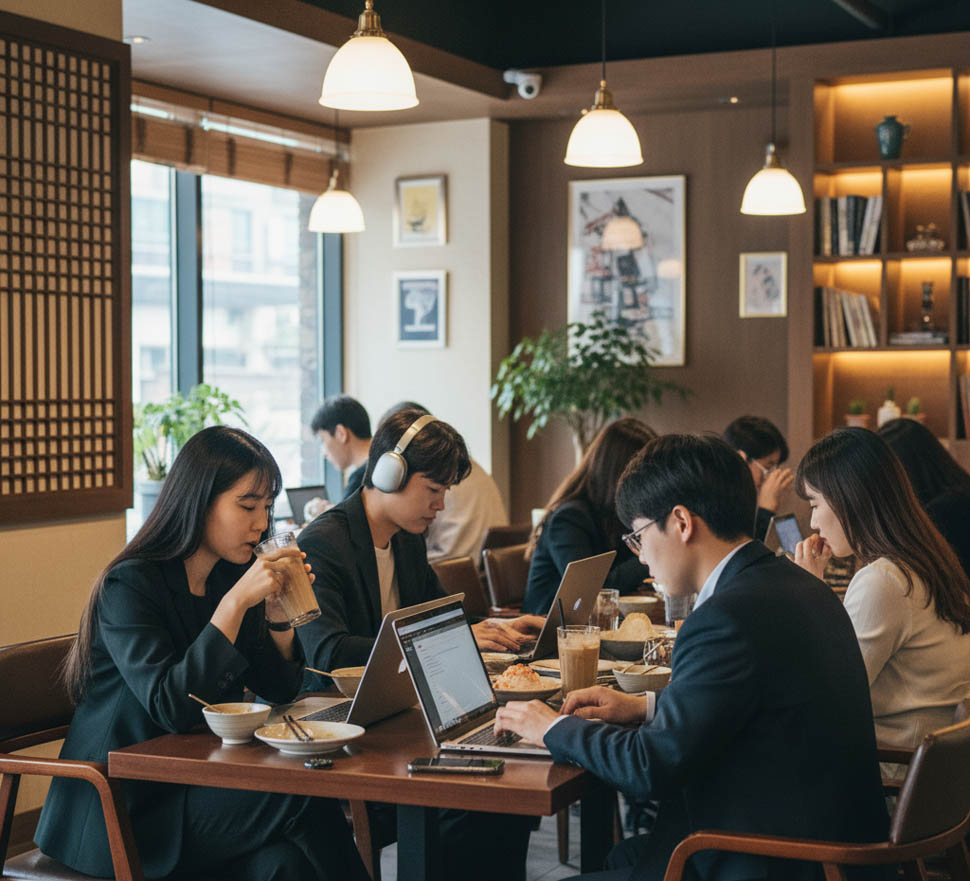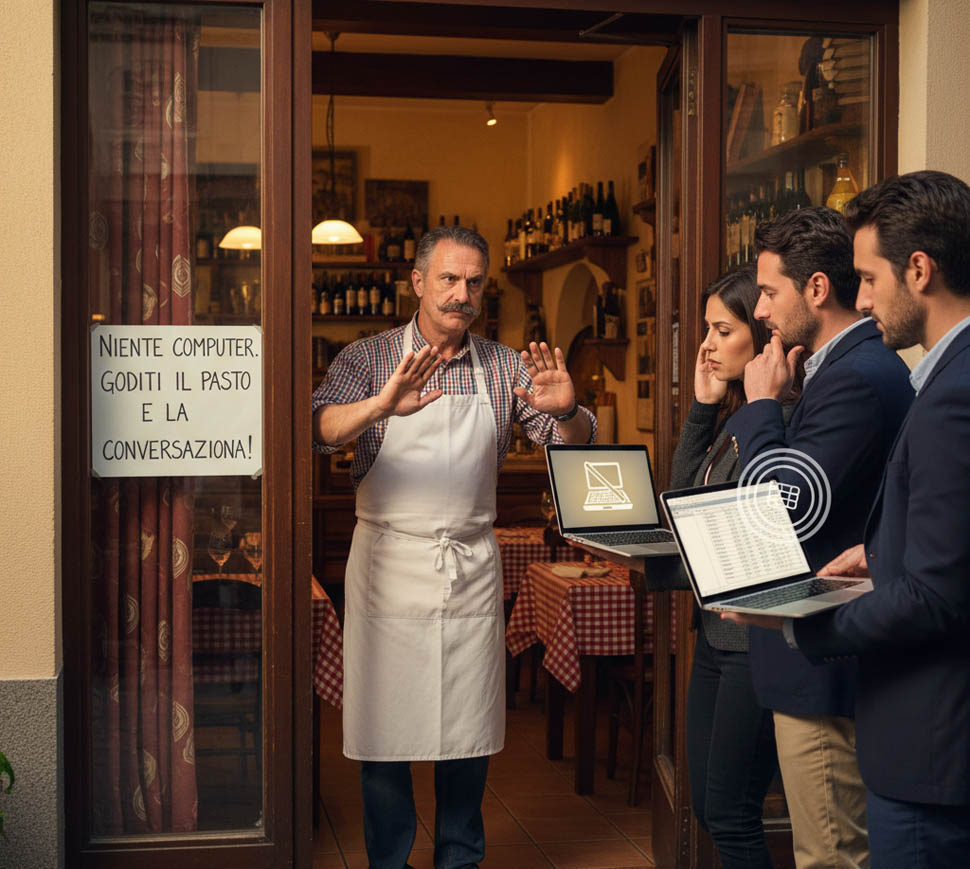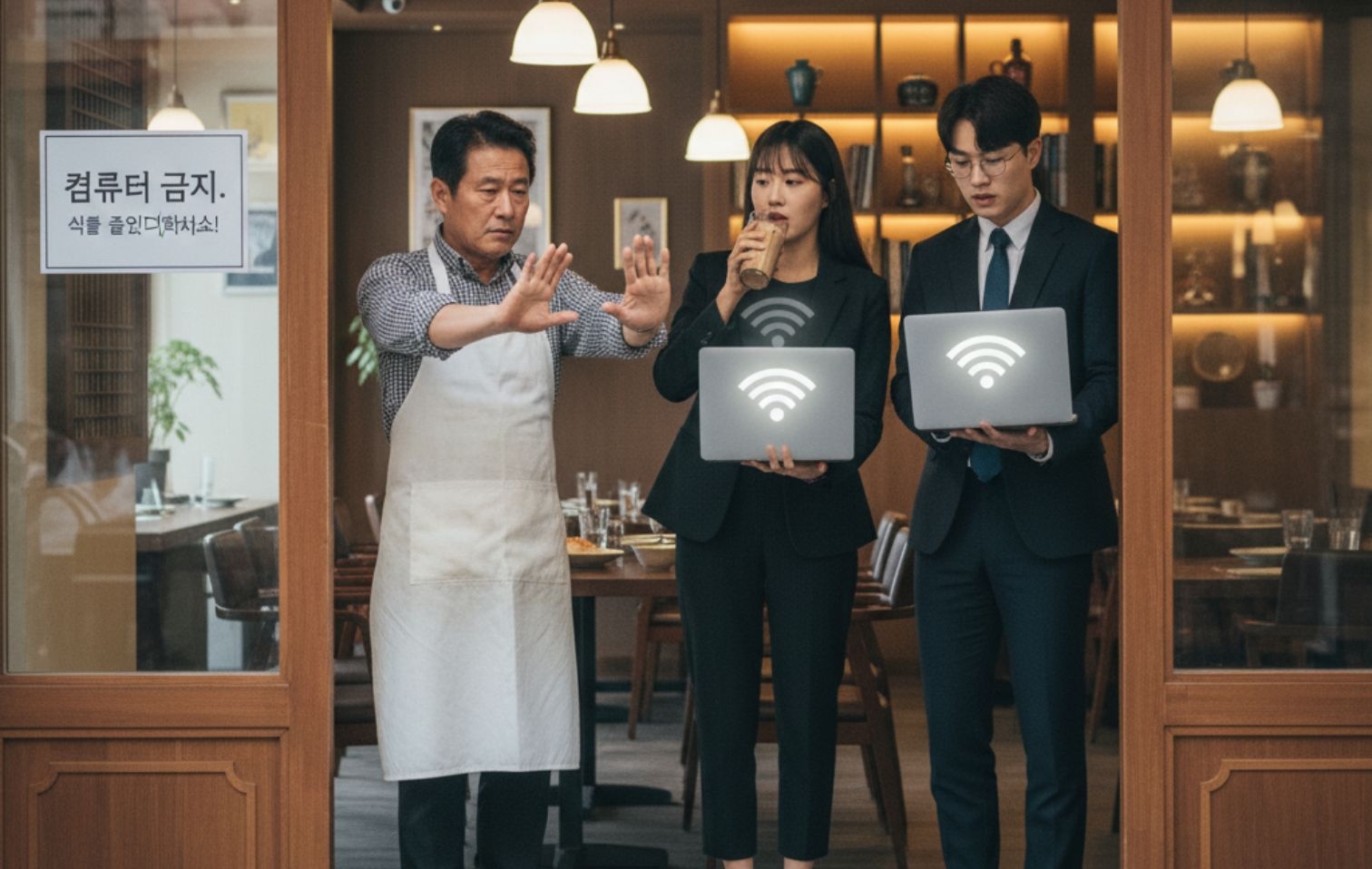A cable snaking between tables, a power strip with six sockets that looks like a technological octopus, and two laptops occupying the same makeshift desk: rather than neighborhood bars, certain cafes in Seoul now resemble low-cost coworking spaces. In South Korea, this phenomenon has a specific name—cagongjok—and a controversial reputation. It is mainly young students and workers who transform cafes into libraries, study spaces, and, in extreme cases, personal offices. Hyun Sung-joo, manager of a café in Daechi, a neighborhood known for its private schools and sky-high rents, recalls the episode with a mixture of irony and frustration to the BBC: “A customer showed up with two laptops and a power strip. He stayed there all day. In the end, I had to block the power outlets.” For a business owner paying exorbitant rents, having a table occupied for ten hours by a single coffee order is certainly not sustainable. This is not an isolated incident. Starbucks Korea, the giant that has been most successful in attracting this clientele, has recently introduced guidelines to curb “abuse”: no external monitors, printers, or makeshift desks left deserted for hours. The company refers to “extreme cases” but acknowledges that the problem exists, also for security reasons: it is not uncommon for abandoned backpacks and computers to be targeted by thieves. The cagongjok phenomenon cannot be separated from the explosion of the sector.

According to the National Tax Service, over the last five years, the number of coffee shops in South Korea has increased by 48%, reaching almost 100,000. This impressive figure tells the story of a country where coffee consumption is no longer just a habit, but a true social and economic ritual. Almost 70% of South Korean Gen Zers—according to a Jinhaksa Catch survey of over 2,000 aspiring workers—say they study at least once a week in a café. When compared with European data, this percentage highlights how deeply rooted this practice is in everyday life. Owners react in different ways. Hyun, with fifteen years of experience, says he is tolerant of those who stay for a long time as long as they order something extra: “Most are respectful. Perhaps two or three percent exaggerate.” Others, however, prefer strict rules. In Jeonju, a café has introduced a ‘No Study Zone’ sign: a maximum of two hours for those who use the space as a classroom or office. ‘Two people ended up taking up as much space as ten normal customers,’ explains the owner. It is not a war on young people, he stresses, but an attempt to avoid conflicts between customers who simply want to drink coffee and those who consider the café an extension of their own room.

There are also those who have chosen the opposite approach, equipping their premises with electrical outlets at every table, individual desks, and more flexible hours. Because, if managed well, cagongjok also represents a pool of loyal customers. For Professor Choi Ra-young of Ansan University, cagongjok is a direct product of the cultural context. “It is a youth culture shaped by a hyper-competitive society,” she explains. Students and aspiring workers live under constant pressure from exams, job insecurity, and often small and suffocating living spaces. It is not surprising, then, that they seek in cafes a balance that is impossible to find elsewhere. A shared table, background music, a cup that slowly cools: details that create a psychological framework of stability. “They are seen as a nuisance, but they are actually the product of a social structure that does not offer adequate public spaces,” Choi observes. It remains to be seen whether this culture is destined to stabilize or dissolve. Starbucks and other chains are trying to regulate it without crushing it, while small cafes oscillate between the need to survive and the need to welcome. Cagongjok tells the story of contemporary South Korea better than a thousand essays: young people suspended between performance anxiety and the search for a place where they can feel, at least for a few hours, sheltered. In the discreet noise of espresso machines, their story continues to be written, laptop after laptop, cup after cup.
